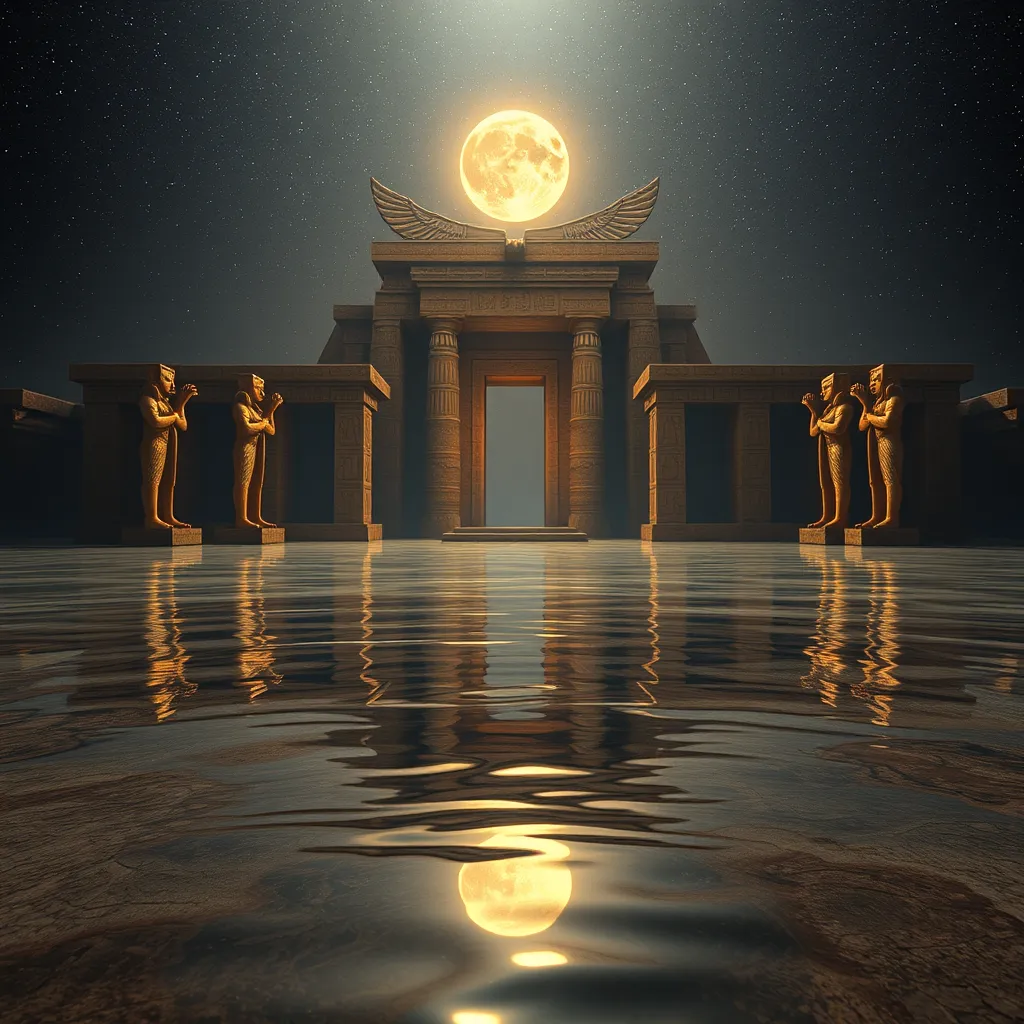The Duat: A Reflection of the Human Condition
I. Introduction
The Duat, in ancient Egyptian beliefs, refers to the realm of the dead, a complex and mysterious afterlife that plays a crucial role in the spiritual journey of souls. It is not merely a destination, but rather a reflection of the human condition, encapsulating themes of morality, judgment, and the eternal cycle of life and death.
Understanding the Duat is essential for grasping how ancient Egyptians viewed existence and the afterlife, forming a foundational aspect of their culture and belief system. This article aims to explore the Duat, its significance, and its implications for understanding the human experience.
II. The Mythological Landscape of the Duat
The geography of the Duat is rich and varied, depicted in ancient texts and tomb paintings as a landscape filled with rivers, mountains, and fields, often likened to the earthly realm but imbued with supernatural elements. It is a place where the sun god Ra journeys each night, battling chaos and darkness.
- Geography: The Duat is often described as having twelve regions, each representing different challenges and trials that souls must face.
- Key Deities: Important figures include Osiris, the god of the afterlife; Anubis, the god of mummification and the protector of graves; and Ma’at, the embodiment of truth and cosmic order.
- Symbolism: The Duat symbolizes the duality of life and death, the struggle between order and chaos, and the importance of moral integrity.
III. The Journey through the Duat
Upon death, the soul embarks on a perilous journey through the Duat, which is fraught with trials and tests that determine its fate in the afterlife.
The most crucial aspect of this journey is the weighing of the heart, where the deceased’s heart is weighed against the feather of Ma’at. This act signifies the judgment of the soul’s purity and moral standing.
- The Process: The deceased must navigate through various obstacles, seeking guidance from deities and overcoming demons.
- Significance of Weighing: A heart lighter than the feather indicates a life of virtue, allowing the soul to enter the field of reeds, a paradise of peace and abundance.
- Lessons Learned: The journey through the Duat emphasizes the importance of living a just and moral life, as one’s actions directly influence their afterlife.
IV. Themes of Morality and Judgment
Central to the belief in the Duat is the concept of Ma’at, which represents truth, balance, and order. This principle is intricately woven into the fabric of Egyptian morality and is foundational in the judgment process.
- Concept of Ma’at: Ma’at is not just a deity but also an ideal that every individual is expected to uphold through their actions.
- Moral Implications: The Duat serves as a mirror reflecting the ethical behavior of individuals during their earthly lives, where every action has consequences.
- Ethical Behavior: The teachings of the Duat encourage individuals to strive for virtue and integrity, knowing that their moral choices will ultimately define their existence in the afterlife.
V. The Duat and the Cycle of Life
The Duat is deeply connected to the cycles of rebirth and transformation, echoing the natural patterns of life and death observed in the world.
- Connections to Rebirth: The journey through the Duat is not just an end but also a transition to a new existence, symbolizing the eternal cycle of life.
- Role in Life and Death: The Duat serves as a bridge between the mortal realm and the divine, allowing for the possibility of renewal and resurrection.
- Human Resilience: The trials faced in the Duat reflect human resilience, emphasizing that transformation often arises from struggle and adversity.
VI. Parallels in Other Cultures
The concept of an afterlife and the journey of the soul is not unique to ancient Egypt; many cultures have their interpretations of life after death.
- Comparative Analysis: The Duat can be compared to the Greek underworld (Hades), the Christian heaven and hell, and the Norse concept of Valhalla, each reflecting their cultural values and beliefs.
- Universal Themes: Across these cultures, themes of fear, hope, and redemption resonate, demonstrating a shared human concern with mortality.
- Cultural Impact: The beliefs surrounding the afterlife influence how societies understand life, death, and moral accountability.
VII. The Duat in Modern Context
The teachings of the Duat continue to hold relevance in today’s society, offering insights that extend beyond ancient Egyptian culture.
- Relevance Today: Concepts of morality and the consequences of one’s actions are still pertinent in contemporary discussions about ethics and accountability.
- Modern Spirituality: Many find resonance with ancient beliefs, incorporating aspects of the Duat’s teachings into their spiritual practices and philosophies.
- Art and Literature: The Duat has inspired countless works in art and literature, serving as a symbol of the eternal human quest for understanding life and death.
VIII. Conclusion
In summary, the Duat is a profound reflection of the human condition, encapsulating the complexities of life, death, morality, and transformation. Its teachings provide valuable insights into how we navigate our existence and the implications of our choices.
As a lens for exploring the human experience, the Duat invites us to contemplate our values, our journey through life, and the legacy we leave behind. The enduring legacy of the Duat enriches our understanding of life and death, reminding us of the timeless quest for meaning and the hope of renewal.




